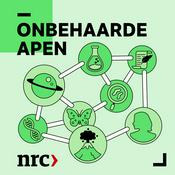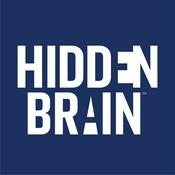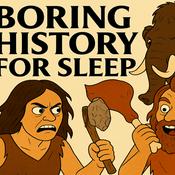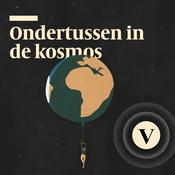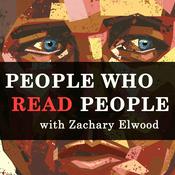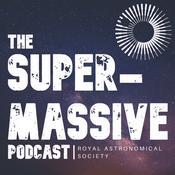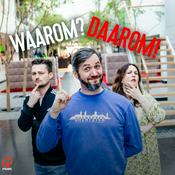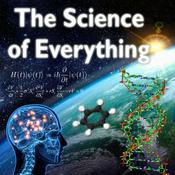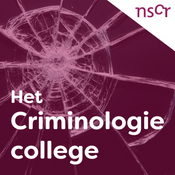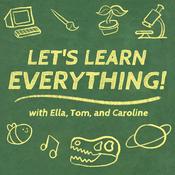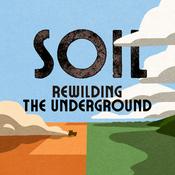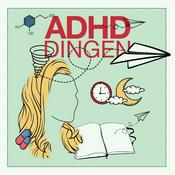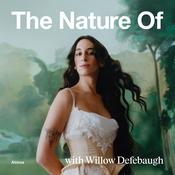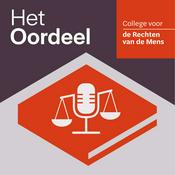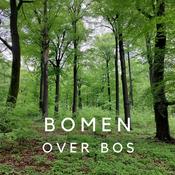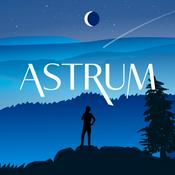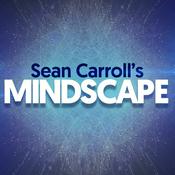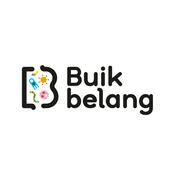1513 afleveringen

Probing Scientific General Intelligence of LLMs with Scientist-Aligned Workflows
23-12-2025 | 24 Min.
🤗 Upvotes: 78 | cs.AI, cs.CL, cs.LG Authors: Wanghan Xu, Yuhao Zhou, Yifan Zhou, Qinglong Cao, Shuo Li, Jia Bu, Bo Liu, Yixin Chen, Xuming He, Xiangyu Zhao, Xiang Zhuang, Fengxiang Wang, Zhiwang Zhou, Qiantai Feng, Wenxuan Huang, Jiaqi Wei, Hao Wu, Yuejin Yang, Guangshuai Wang, Sheng Xu, Ziyan Huang, Xinyao Liu, Jiyao Liu, Cheng Tang, Wei Li, Ying Chen, Junzhi Ning, Pengfei Jiang, Chenglong Ma, Ye Du, Changkai Ji, Huihui Xu, Ming Hu, Jiangbin Zheng, Xin Chen, Yucheng Wu, Feifei Jiang, Xi Chen, Xiangru Tang, Yuchen Fu, Yingzhou Lu, Yuanyuan Zhang, Lihao Sun, Chengbo Li, Jinzhe Ma, Wanhao Liu, Yating Liu, Kuo-Cheng Wu, Shengdu Chai, Yizhou Wang, Ouwen Zhangjin, Chen Tang, Shufei Zhang, Wenbo Cao, Junjie Ren, Taoyong Cui, Zhouheng Yao, Juntao Deng, Yijie Sun, Feng Liu, Wangxu Wei, Jingyi Xu, Zhangrui Li, Junchao Gong, Zijie Guo, Zhiyu Yao, Zaoyu Chen, Tianhao Peng, Fangchen Yu, Bo Zhang, Dongzhan Zhou, Shixiang Tang, Jiaheng Liu, Fenghua Ling, Yan Lu, Yuchen Ren, Ben Fei, Zhen Zhao, Xinyu Gu, Rui Su, Xiao-Ming Wu, Weikang Si, Yang Liu, Hao Chen, Xiangchao Yan, Xue Yang, Junchi Yan, Jiamin Wu, Qihao Zheng, Chenhui Li, Zhiqiang Gao, Hao Kong, Junjun He, Mao Su, Tianfan Fu, Peng Ye, Chunfeng Song, Nanqing Dong, Yuqiang Li, Huazhu Fu, Siqi Sun, Lijing Cheng, Jintai Lin, Wanli Ouyang, Bowen Zhou, Wenlong Zhang, Lei Bai Title: Probing Scientific General Intelligence of LLMs with Scientist-Aligned Workflows Arxiv: http://arxiv.org/abs/2512.16969v1 Abstract: Despite advances in scientific AI, a coherent framework for Scientific General Intelligence (SGI)-the ability to autonomously conceive, investigate, and reason across scientific domains-remains lacking. We present an operational SGI definition grounded in the Practical Inquiry Model (PIM: Deliberation, Conception, Action, Perception) and operationalize it via four scientist-aligned tasks: deep research, idea generation, dry/wet experiments, and experimental reasoning. SGI-Bench comprises over 1,000 expert-curated, cross-disciplinary samples inspired by Science's 125 Big Questions, enabling systematic evaluation of state-of-the-art LLMs. Results reveal gaps: low exact match (10--20%) in deep research despite step-level alignment; ideas lacking feasibility and detail; high code executability but low execution result accuracy in dry experiments; low sequence fidelity in wet protocols; and persistent multimodal comparative-reasoning challenges. We further introduce Test-Time Reinforcement Learning (TTRL), which optimizes retrieval-augmented novelty rewards at inference, enhancing hypothesis novelty without reference answer. Together, our PIM-grounded definition, workflow-centric benchmark, and empirical insights establish a foundation for AI systems that genuinely participate in scientific discovery.

PhysBrain: Human Egocentric Data as a Bridge from Vision Language Models to Physical Intelligence
23-12-2025 | 25 Min.
🤗 Upvotes: 64 | cs.RO Authors: Xiaopeng Lin, Shijie Lian, Bin Yu, Ruoqi Yang, Changti Wu, Yuzhuo Miao, Yurun Jin, Yukun Shi, Cong Huang, Bojun Cheng, Kai Chen Title: PhysBrain: Human Egocentric Data as a Bridge from Vision Language Models to Physical Intelligence Arxiv: http://arxiv.org/abs/2512.16793v1 Abstract: Robotic generalization relies on physical intelligence: the ability to reason about state changes, contact-rich interactions, and long-horizon planning under egocentric perception and action. However, most VLMs are trained primarily on third-person data, creating a fundamental viewpoint mismatch for humanoid robots. Scaling robot egocentric data collection remains impractical due to high cost and limited diversity, whereas large-scale human egocentric videos offer a scalable alternative that naturally capture rich interaction context and causal structure. The key challenge is to convert raw egocentric videos into structured and reliable embodiment training supervision. Accordingly, we propose an Egocentric2Embodiment translation pipeline that transforms first-person videos into multi-level, schema-driven VQA supervision with enforced evidence grounding and temporal consistency, enabling the construction of the Egocentric2Embodiment dataset (E2E-3M) at scale. An egocentric-aware embodied brain, termed PhysBrain, is obtained by training on the E2E-3M dataset. PhysBrain exhibits substantially improved egocentric understanding, particularly for planning on EgoThink. It provides an egocentric-aware initialization that enables more sample-efficient VLA fine-tuning and higher SimplerEnv success rates (53.9\%), demonstrating effective transfer from human egocentric supervision to downstream robot control.

When Reasoning Meets Its Laws
23-12-2025 | 21 Min.
🤗 Upvotes: 48 | cs.AI, cs.CL Authors: Junyu Zhang, Yifan Sun, Tianang Leng, Jingyan Shen, Liu Ziyin, Paul Pu Liang, Huan Zhang Title: When Reasoning Meets Its Laws Arxiv: http://arxiv.org/abs/2512.17901v1 Abstract: Despite the superior performance of Large Reasoning Models (LRMs), their reasoning behaviors are often counterintuitive, leading to suboptimal reasoning capabilities. To theoretically formalize the desired reasoning behaviors, this paper presents the Laws of Reasoning (LoRe), a unified framework that characterizes intrinsic reasoning patterns in LRMs. We first propose compute law with the hypothesis that the reasoning compute should scale linearly with question complexity. Beyond compute, we extend LoRe with a supplementary accuracy law. Since the question complexity is difficult to quantify in practice, we examine these hypotheses by two properties of the laws, monotonicity and compositionality. We therefore introduce LoRe-Bench, a benchmark that systematically measures these two tractable properties for large reasoning models. Evaluation shows that most reasoning models exhibit reasonable monotonicity but lack compositionality. In response, we develop an effective finetuning approach that enforces compute-law compositionality. Extensive empirical studies demonstrate that better compliance with compute laws yields consistently improved reasoning performance on multiple benchmarks, and uncovers synergistic effects across properties and laws. Project page: https://lore-project.github.io/

Seed-Prover 1.5: Mastering Undergraduate-Level Theorem Proving via Learning from Experience
23-12-2025 | 25 Min.
🤗 Upvotes: 40 | cs.CL Authors: Jiangjie Chen, Wenxiang Chen, Jiacheng Du, Jinyi Hu, Zhicheng Jiang, Allan Jie, Xiaoran Jin, Xing Jin, Chenggang Li, Wenlei Shi, Zhihong Wang, Mingxuan Wang, Chenrui Wei, Shufa Wei, Huajian Xin, Fan Yang, Weihao Gao, Zheng Yuan, Tianyang Zhan, Zeyu Zheng, Tianxi Zhou, Thomas Hanwen Zhu Title: Seed-Prover 1.5: Mastering Undergraduate-Level Theorem Proving via Learning from Experience Arxiv: http://arxiv.org/abs/2512.17260v1 Abstract: Large language models have recently made significant progress to generate rigorous mathematical proofs. In contrast, utilizing LLMs for theorem proving in formal languages (such as Lean) remains challenging and computationally expensive, particularly when addressing problems at the undergraduate level and beyond. In this work, we present \textbf{Seed-Prover 1.5}, a formal theorem-proving model trained via large-scale agentic reinforcement learning, alongside an efficient test-time scaling (TTS) workflow. Through extensive interactions with Lean and other tools, the model continuously accumulates experience during the RL process, substantially enhancing the capability and efficiency of formal theorem proving. Furthermore, leveraging recent advancements in natural language proving, our TTS workflow efficiently bridges the gap between natural and formal languages. Compared to state-of-the-art methods, Seed-Prover 1.5 achieves superior performance with a smaller compute budget. It solves \textbf{88\% of PutnamBench} (undergraduate-level), \textbf{80\% of Fate-H} (graduate-level), and \textbf{33\% of Fate-X} (PhD-level) problems. Notably, using our system, we solved \textbf{11 out of 12 problems} from Putnam 2025 within 9 hours. Our findings suggest that scaling learning from experience, driven by high-quality formal feedback, holds immense potential for the future of formal mathematical reasoning.

4D-RGPT: Toward Region-level 4D Understanding via Perceptual Distillation
23-12-2025 | 26 Min.
🤗 Upvotes: 31 | cs.CV Authors: Chiao-An Yang, Ryo Hachiuma, Sifei Liu, Subhashree Radhakrishnan, Raymond A. Yeh, Yu-Chiang Frank Wang, Min-Hung Chen Title: 4D-RGPT: Toward Region-level 4D Understanding via Perceptual Distillation Arxiv: http://arxiv.org/abs/2512.17012v1 Abstract: Despite advances in Multimodal LLMs (MLLMs), their ability to reason over 3D structures and temporal dynamics remains limited, constrained by weak 4D perception and temporal understanding. Existing 3D and 4D Video Question Answering (VQA) benchmarks also emphasize static scenes and lack region-level prompting. We tackle these issues by introducing: (a) 4D-RGPT, a specialized MLLM designed to capture 4D representations from video inputs with enhanced temporal perception; (b) Perceptual 4D Distillation (P4D), a training framework that transfers 4D representations from a frozen expert model into 4D-RGPT for comprehensive 4D perception; and (c) R4D-Bench, a benchmark for depth-aware dynamic scenes with region-level prompting, built via a hybrid automated and human-verified pipeline. Our 4D-RGPT achieves notable improvements on both existing 4D VQA benchmarks and the proposed R4D-Bench benchmark.
Meer Wetenschap podcasts
Trending Wetenschap -podcasts
Over Daily Paper Cast
Luister naar Daily Paper Cast, Vroege Vogels en vele andere podcasts van over de hele wereld met de radio.net-app

Ontvang de gratis radio.net app
- Zenders en podcasts om te bookmarken
- Streamen via Wi-Fi of Bluetooth
- Ondersteunt Carplay & Android Auto
- Veel andere app-functies
Ontvang de gratis radio.net app
- Zenders en podcasts om te bookmarken
- Streamen via Wi-Fi of Bluetooth
- Ondersteunt Carplay & Android Auto
- Veel andere app-functies


Daily Paper Cast
download de app,
luisteren.



